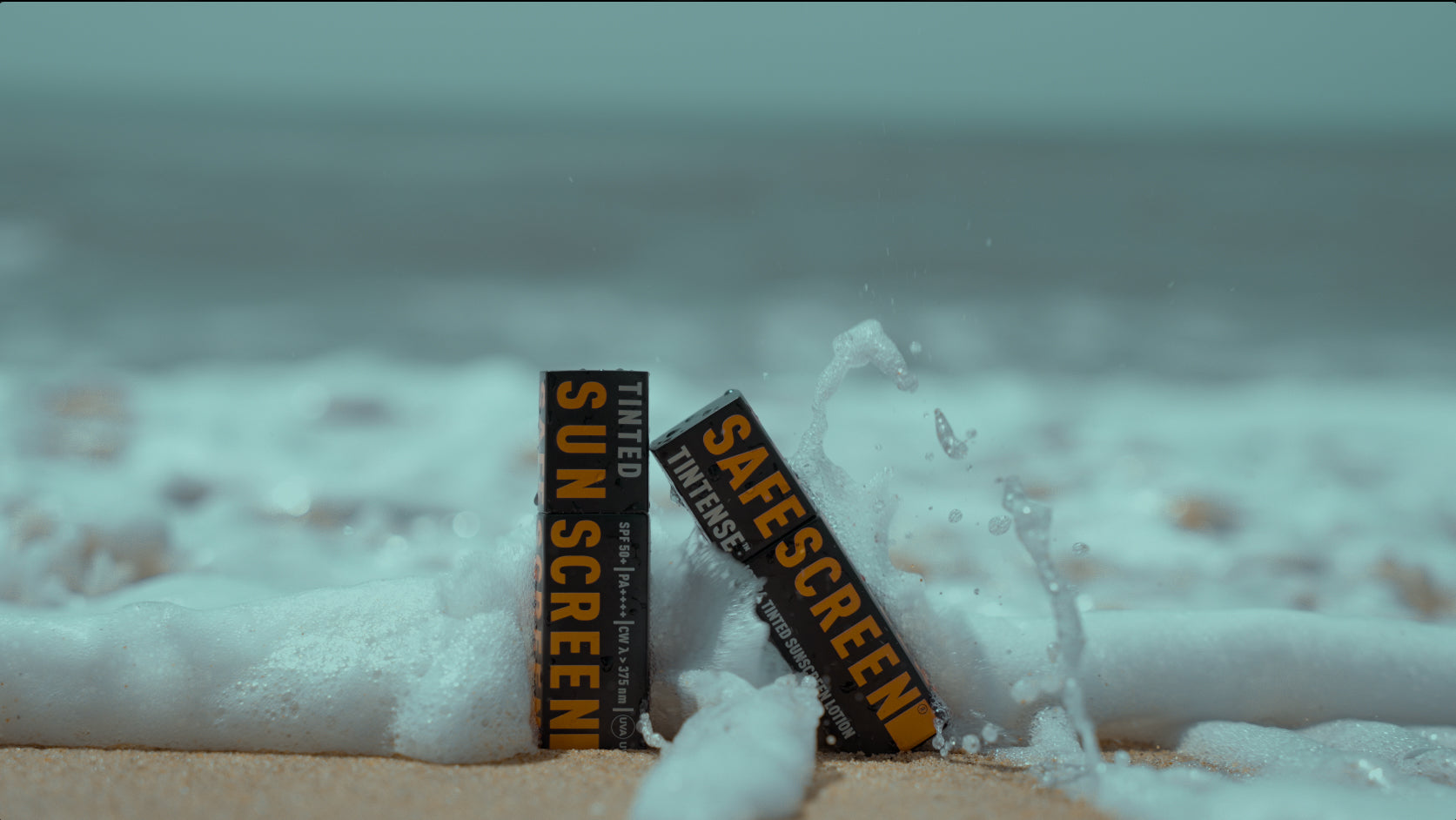Reef-Safe Sunscreen Checker

Is Your Sunscreen Safe For The Ocean?
Find out if your sunscreen is reef-safe and discover better options for your next beach holiday.
Explore CHOSEN’s Handpicked Selection
Instead of worrying about what’s in your sunscreen, let us do the work.
DEEP DIVE
Why Reef-Safe Sunscreens Matter?
Every year, approximately 14000 tonnes of sunscreen wash off into our oceans, damaging coral reefs and marine life. Some chemical UV filters can bleach corals, disrupt marine ecosystems, and harm sea animals.
When we use reef-unsafe sunscreens, the chemicals don’t just wash away—they find their way back to us through water and food. Over time, they accumulate in seafood, which we then consume, potentially affecting our hormones and overall health.
These chemicals also seep into groundwater and drinking water supplies, as most wastewater treatment plants aren’t equipped to filter them out. What goes into the water eventually comes back to us, making the choice of a reef-safe sunscreen not just about protecting marine life but also about safeguarding our own well-being.
Reef-Safe Ingredients
- Reef-safe ingredients are considered safe for marine ecosystems because they do not contribute to coral bleaching, disrupt marine life, or accumulate as harmful pollutants in the water.
- Non-nano mineral UV filters, like Non-Nano Zinc Oxide and Non-Nano Titanium Dioxide, are too large to be absorbed by coral, reducing the risk of toxicity. Certain chemical UV filters are also considered reef-safe as they are photostable, biodegradable, and do not interfere with marine organisms' hormonal or reproductive systems.
- These ingredients break down naturally without leaving long-lasting harmful residues in the ocean, ensuring both effective sun protection and environmental safety.
✅ Non-nano Zinc Oxide
✅ Non-nano Titanium Dioxide
Reef-Unsafe Ingredients
- Reef-unsafe ingredients are UV filters that have been found to harm marine ecosystems, particularly coral reefs and aquatic life. These include nano mineral filters and certain chemical UV filters that can accumulate in the water, disrupt marine organisms, and contribute to coral bleaching, DNA damage, and hormonal imbalances in marine species.
- Due to their environmental impact, some of these ingredients have been banned in various locations.
- Reef-unsafe sunscreen ingredients can wash off while swimming or through wastewater, making their way into marine environments and threatening biodiversity, coral health, and the overall balance of ocean ecosystems.
❌ 3- Benzylidiene camphor
❌ 4-Methylbenzylidene camphor
❌ Octocrylene
❌ Benzophenone-1
❌ Benzophenone-8
❌ OD-PABA
❌ nano-Titanium dioxide
❌ nano-Zinc Oxide
❌ Octinoxate
❌ Oxybenzone

Different climates call for different sun care. Here’s how to stay protected wherever you go:
- Beach Destinations – Opt for a broad spectrum long-wear sunscreen with high water resistance to reduce frequent reapplications, minimizing product load on your skin and the environment.
- Mountain Getaways – High-altitude UV is intense! Choose a broad-spectrum SPF 50+ or higher for optimal protection.
- Humid Climates – A lightweight, non-greasy, and durable sunscreen is your best bet, as frequent reapplication isn’t always practical.

Why SOC Needs Special Sun Care like SAFESCREEN:
- High UV, HEVL & IR Protection – Essential to prevent hyperpigmentation, the key sign of aging in Indian skin.
- No White Cast – Tinted sunscreens like SAFESCREEN TINTENSE blend seamlessly for an invisible finish.
- Endocrine Disruptor- Free & Reef-Safe – Protect your skin while caring for the environment.


















